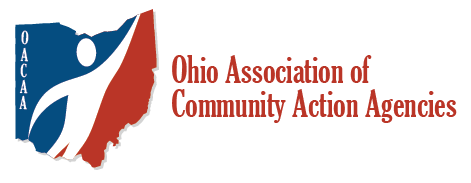The purpose of unemployment insurance is to stabilize our economy and alleviate personal hardship stemming from involuntary job loss. Unemployment benefits are earned by employment and job loss through no fault of the worker. The state unemployment compensation fund needs to be solvent in order to ensure this critical poverty-prevention tool remains intact. OACAA supports a long-term and balanced approach to solvency that protects all of Ohio’s workers. That said, many working families in Ohio are not making enough to consistently afford basic expenses. In Ohio, half of low-income households have at least one member who has been employed in the past year. Of low-income households, 46% report that the longest-employed person in their household worked part-time. For too many Ohioans, having a job does not mean making a living. The current status of the unemployment compensation fund did not occur overnight and the best solution is not one designed to shift the problem to the unemployed who are least able to bear the burden.
HB 394, if enacted, will go farther than any other state to limit benefits available to the unemployed and create barriers to limit benefits available to the unemployed and create barriers to accessing unemployment insurance compensation. Below are a few quick facts about the bill.
1 – Weeks of Benefits
HB394 creates a sliding scale based on unemployment levels under which Ohioans would receive a maximum of 12 to 20 weeks (depending on unemployment rates) of benefits, tying Ohio with North Carolina for lowest in the country. In that state, just 11% of the jobless are receiving unemployment benefits. This provision discriminates against rural counties and cities with high unemployment and makes it difficult for jobless Ohioans to get the training they need for new jobs.
2 – Just Cause/Employee Handbook
The bill disqualifies from UI benefits any employee who violates their employee handbook, regardless of the circumstances of the violation and without showing fault. An amendment was accepted by the committee that now requires, for the disqualification to apply, the employer must have proof that the employee handbook was distributed to the employee before the employee violated the handbook terms. We still believe this is a slippery slope and an employee could be terminated for something that is out of their control, like a broken down bus.
3 – Fiscal Analysis
The proposed cuts are eligibility barriers in HB 394 are intended to address funding issues with Ohio’s UI system, but they do so at the expense of Ohio’s jobless workers while effectively reducing the rates employers are required to contribute. According to the Legislative Service Commission Fiscal Analysis, the bill will result in savings to employers of an average of $313 million annually through 2025, while reducing benefits to employees by an average of $475 million annually in the same period. This produces a net positive gain to the fund, a net savings to employers, and a huge net loss to employees.
Recommendation
Instead of approving this bill, OACAA recommends that you create a committee of stakeholders that includes the state, counties, employers, and employees to make recommendations on the unemployment insurance system. Requiring stakeholders to sit down together, understand the problems of each party, and recommend solutions that are supported by all groups, will ensure a balanced and reasonable path for a sustainable insurance system in Ohio.
Follow the legislation of HB 394
Follow #StartOver394 on Twitter
